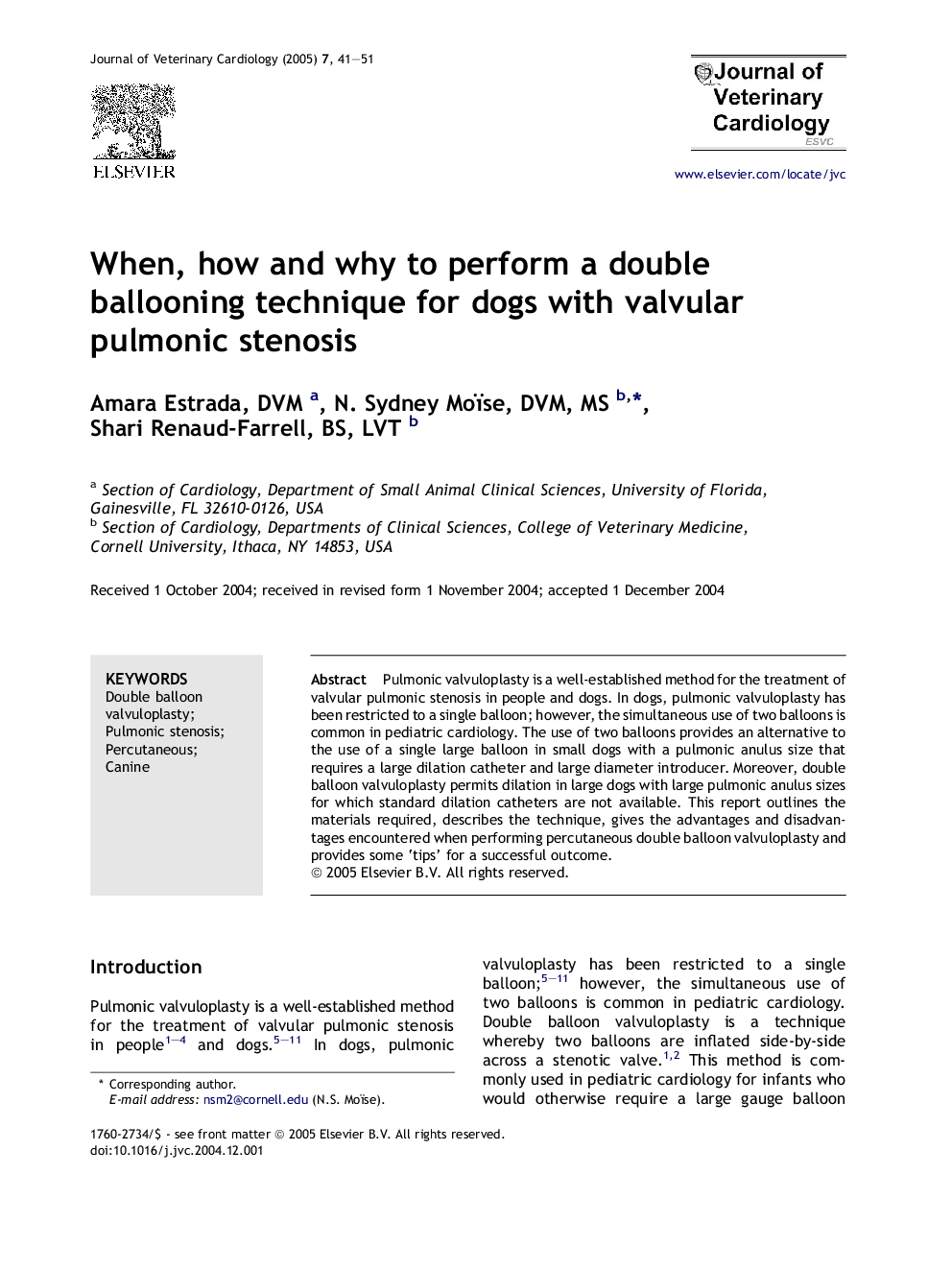| Article ID | Journal | Published Year | Pages | File Type |
|---|---|---|---|---|
| 8968995 | Journal of Veterinary Cardiology | 2005 | 11 Pages |
Abstract
Pulmonic valvuloplasty is a well-established method for the treatment of valvular pulmonic stenosis in people and dogs. In dogs, pulmonic valvuloplasty has been restricted to a single balloon; however, the simultaneous use of two balloons is common in pediatric cardiology. The use of two balloons provides an alternative to the use of a single large balloon in small dogs with a pulmonic anulus size that requires a large dilation catheter and large diameter introducer. Moreover, double balloon valvuloplasty permits dilation in large dogs with large pulmonic anulus sizes for which standard dilation catheters are not available. This report outlines the materials required, describes the technique, gives the advantages and disadvantages encountered when performing percutaneous double balloon valvuloplasty and provides some 'tips' for a successful outcome.
Keywords
Related Topics
Life Sciences
Agricultural and Biological Sciences
Animal Science and Zoology
Authors
Amara DVM, N. Sydney DVM, MS, Shari BS, LVT,
